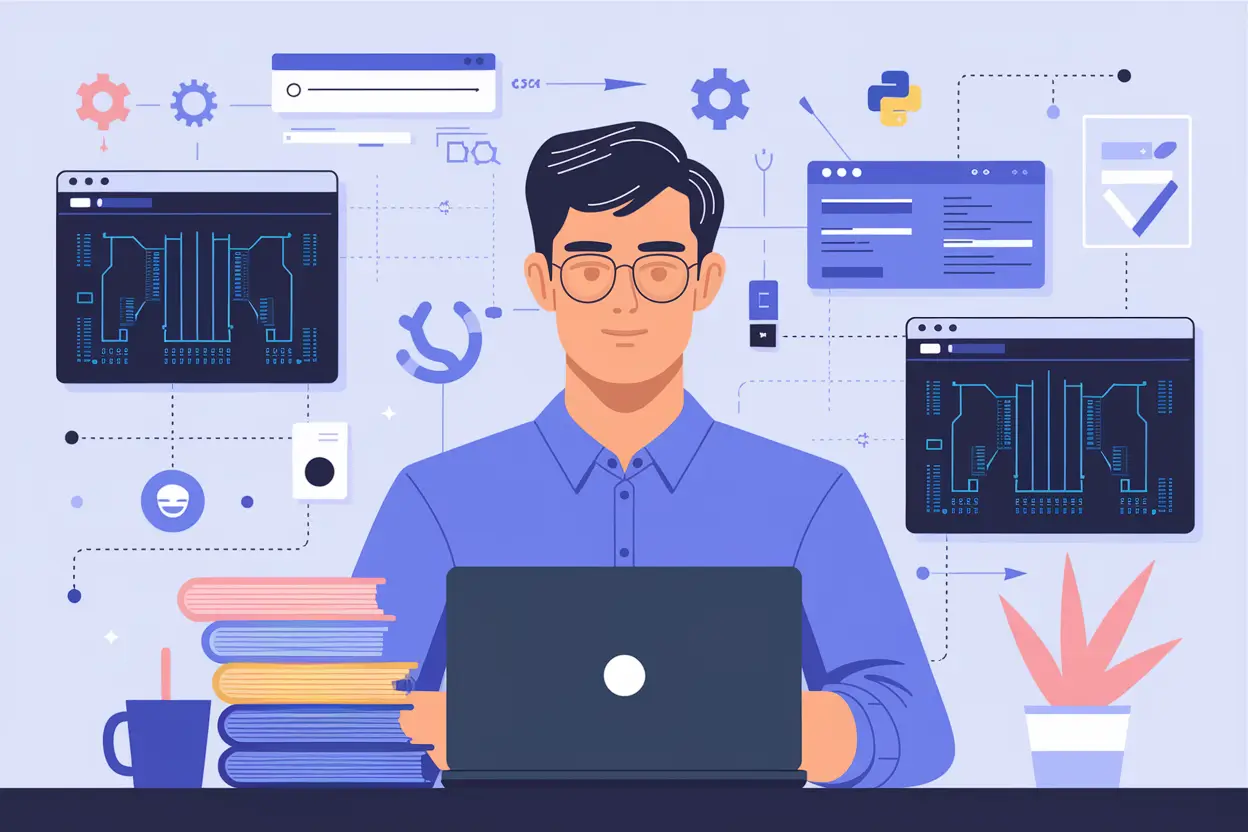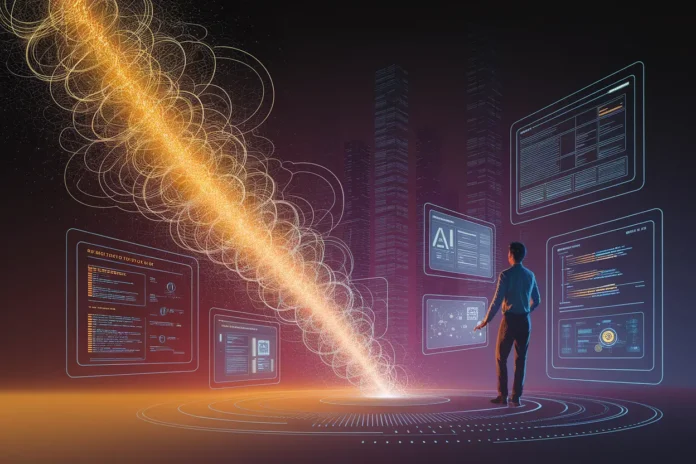AI Development Frameworks are fundamental in shaping today’s expanding artificial intelligence landscape. These powerful platforms offer structured environments that streamline the process of building, training, and deploying intelligent systems. Equipped with pre-configured neural network layers, training loops, and scalable deployment tools, developers can focus on innovation instead of recreating foundational code. In this in-depth exploration, we’ll uncover what makes AI development frameworks essential, dive into the top options in 2025, evaluate their pros and cons, and look ahead at what the future holds for developers and businesses alike.
Understanding AI Development Frameworks
AI development frameworks provide foundational tools and libraries tailored to machine learning and deep learning applications. These frameworks abstract complex operations — such as model definition, backpropagation, and gradient computation — allowing developers to concentrate on architecture optimization and experimentation.
From pre-built layers and loss functions to deployment handlers and hardware optimizers, these frameworks serve as a bridge between research and production-grade AI implementation.
Core Components of AI Development Frameworks
Most AI development frameworks share five common components that define their usability and power:
- Model Building: Options to define complex neural networks using layered models, activation functions, and dynamic routing.
- Training and Evaluation: Tools to process datasets, carry out training using optimizers like Adam or SGD, and evaluate with metrics such as accuracy, loss or F1-score.
- Deployment: Mechanisms for inference, packaging models for mobile, web, on-premise or cloud-based implementations.
- Scalability: Support for distributed training across multi-GPU setups or cloud infrastructures.
- Interoperability: Integration with data pipelines and programming environments like Python, JavaScript, and mobile SDKs.
Top AI Development Frameworks in 2025
Let’s explore the leading AI development frameworks you should consider in 2025.
TensorFlow 3.0
TensorFlow 3.0 enhances usability and power with:
- Multimodal Model Support: Build models that consume images and text in parallel.
- Vertex AI Integration: Seamless MLOps and deployment workflows on Google Cloud.
- Enhanced API: Simplified syntax, improved Keras integration, and better error logging.
PyTorch 3.1
PyTorch’s dynamic computation system gets performance upgrades:
- Edge Deployment: Compact model execution on mobile and embedded devices.
- ONNX Compatibility: Easier export for third-party deployment engines.
- Distributed Training: Native support for hardware clusters and large datasets.
MindSpore
The Huawei-backed MindSpore evolves quickly with standout features:
- Cross-Platform Support: Windows, Linux, Android, and iOS compatibility.
- Lightweight Engine: Ideal for mobile-first AI applications.
- Language Diversity: Native support for Python, C++, and more.
OpenVINO
Specializing in inferencing, OpenVINO excels in computer vision tasks:
- Hardware Optimization: Runs efficiently on Intel CPUs, VPUs, and GPUs.
- Model Portability: Use TensorFlow, PyTorch, ONNX, and more.
- CVI Deployment: Perfect for facial recognition, surveillance, and autonomous devices.
Simpliflow
Simpliflow is engineered for fine-tuned agentic AI workflows:
- Declarative Workflow Design: Use JSON to define task orchestration.
- Modular Architecture: Plug-and-play modules with external APIs and databases.
- LLM Integrations: Bundled access to over 100 Large Language Models.
Benefits of AI Development Frameworks
- Time Savings: Pre-built neural components reduce repetitive coding.
- Standardization: Promotes consistent and clean codebase practices.
- Real-Time Feedback: Interactive training visualization (e.g., TensorBoard).
- Community Resources: From GitHub repositories to Stack Overflow, help is never far away.
Challenges of AI Development Frameworks
Despite their benefits, frameworks carry certain drawbacks:
- Steep Learning Curve: Complex syntax or lack of documentation can impede new users.
- Hardware Dependence: Training on CPUs is slow and GPU access can be costly.
- Versioning Conflicts: Breaking changes in updates may affect older models.
Use Cases Across Industries with AI Development Frameworks
- Healthcare: MindSpore aids MRI image segmentation and cancer detection models.
- Finance: TensorFlow and PyTorch enable fraud detection via anomaly detection models.
- Retail: OpenVINO powers in-store camera analysis to monitor foot traffic.
- Customer Support: Simpliflow assists in deploying multi-turn chatbots.
AI Development Frameworks for Edge Deployment
Frameworks now optimize AI for real-time, on-device inference:
- Smaller Model Footprints: Through knowledge distillation and pruning.
- Platform Flexibility: Deploy via Android NNAPI, iOS CoreML, or Raspberry Pi setups.
- Fast Inference: Inferencing within milliseconds directly on device.
Multi-Modal Models in AI Development Frameworks
Frameworks increasingly support cross-domain learning:
- Text + Vision: Build AI that can caption images or answer visual questions.
- Audio Processing: Process speech for commands or transcription.
- Combined Outputs: Systems generating both text and sounds from inputs.
Best Practices for Developers Using AI Development Frameworks
- Audit Code Regularly: Check for deprecated functions and packages.
- Optimize Training: Use batch normalization, dropout, and proper learning rate schedules.
- Test Extensively: Apply unit and integration testing to avoid regression errors.
Comparing Frameworks with AutoML Platforms
| Aspect | AI Framework | AutoML |
|---|---|---|
| Control | High | Moderate |
| Customization | Full | Predefined Pipelines |
| Ease of Use | Learning Curve | Beginner Friendly |
| Output Accuracy | High (with tuning) | Moderate to High |
The Future of AI Development Frameworks
Several upcoming trends are set to transform how developers use AI frameworks:
- Model Context Protocol (MCP): Enhances cross-product AI communication.
- Open Source Proliferation: Emphasizes transparency and global contributions from developers and companies alike.
- DevOps Integration: Automation of retraining pipelines and log monitoring for MLOps workflows.
Common Mistakes When Using AI Development Frameworks
- Ignoring Version Logs: Always check what changes in major releases.
- Underutilizing Profilers: Tools like TensorFlow Profiler can drastically improve training efficiency.
- Mismatched Framework-Model Pairs: Validate model export compatibility with chosen deployment environments.
Tips for Choosing the Right AI Development Framework
- Skill Alignment: Choose based on programming language comfort and required documentation.
- Hardware Needs: Match framework optimization levels to your available GPUs or TPUs.
- Model Type: Frameworks like OpenVINO are specialized for vision, while PyTorch is ideal for NLP and research.
Conclusion: The Ongoing Evolution of AI Development Frameworks
AI Development Frameworks represent the foundation of scalable, efficient, and innovative artificial intelligence projects. From TensorFlow’s robust ecosystem to Simpliflow’s workflow-focused design, developers today have unprecedented access to powerful tools. As AI applications become more sophisticated and widespread, frameworks will continue to evolve, simplifying deployment, automating tuning, and improving interpretability.




